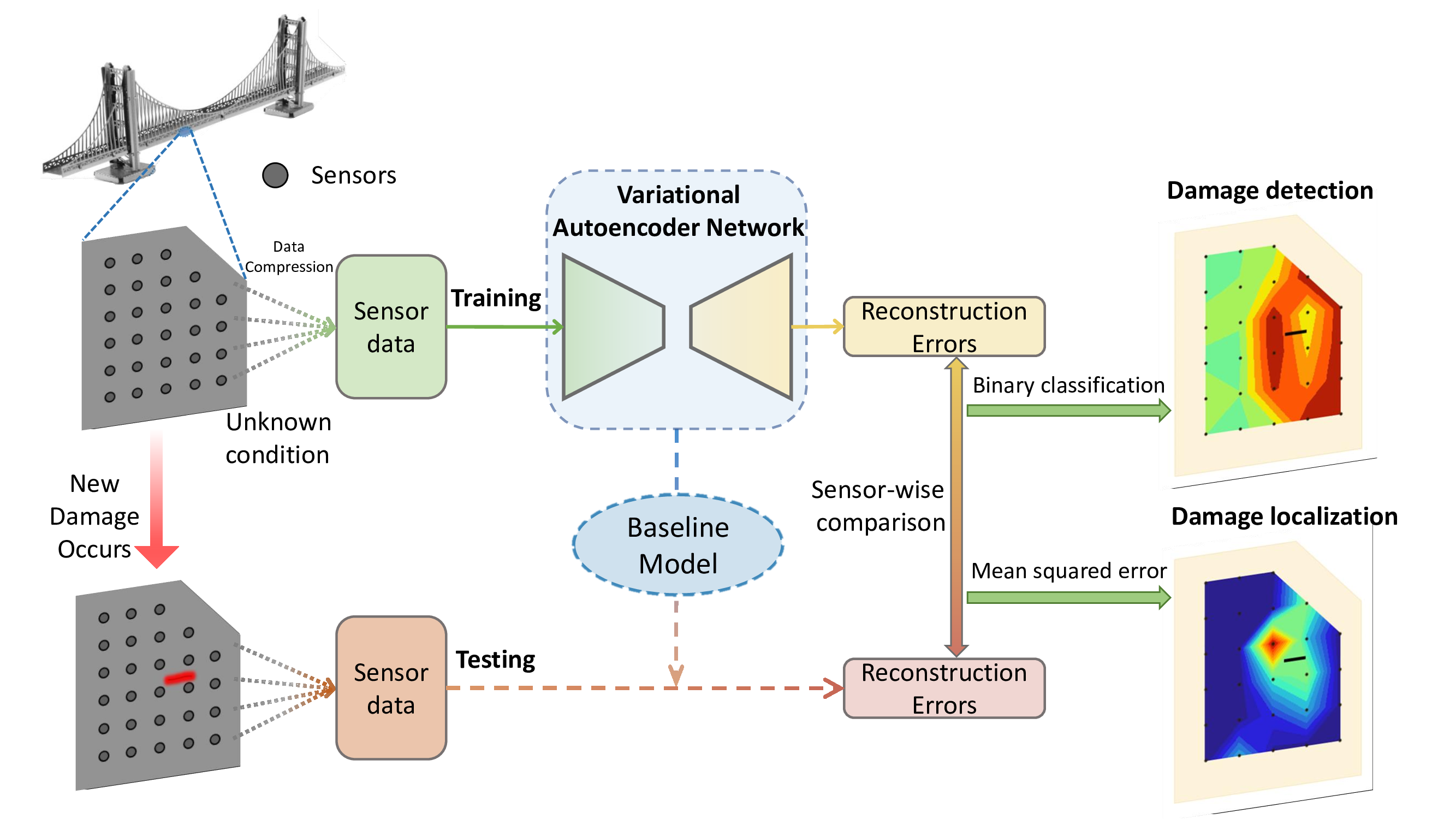Abstract
This study proposes a novel anomaly detection approach focusing on structural components which do not have a baseline model and with complex boundary conditions that cannot be built into a finite element or a digital twin model. The approach uses only sensor-collected compressed response distribution data to detect and localize changes in boundary conditions under extreme loading events. The developed methods use unsupervised anomaly detection networks combined with novel data compression algorithms. The deep network collects training data from real direct measured responses of the structural system over time to build a model and then computes the reconstruction errors and identifies anomalies. A simplified gusset plate under variable clamped-clamped boundary conditions is used in this study as a preliminary proof of concept. In this work, anomalies are induced by changing the connection conditions (boundary conditions) of the gusset plate (e.g. bolts loosening). This study improved the deep learning network performance by incorporating mechanics-based loss functions into the network, fed with experimental data obtained from the distributed sensors installed on the structural element. Results show that the mechanics-based modified loss function significantly improves the identification and localization abilities of boundary condition anomalies and eliminates undesired factors and false predictions.
